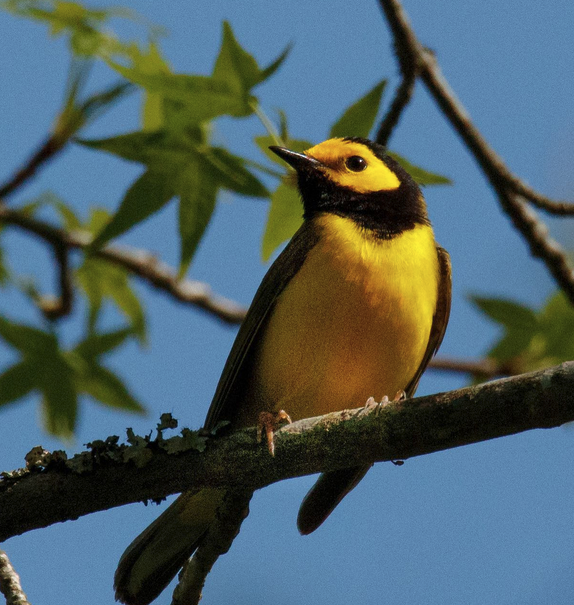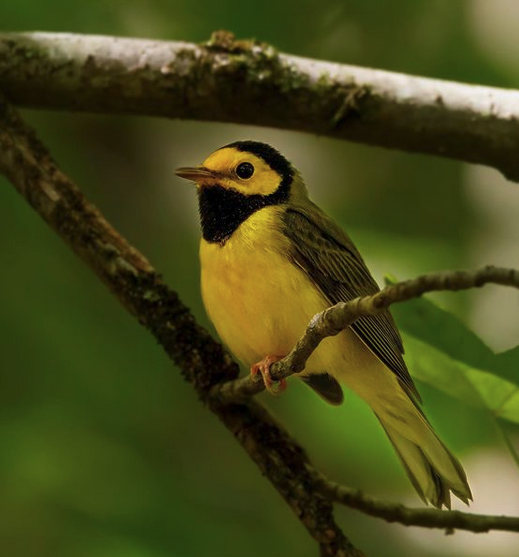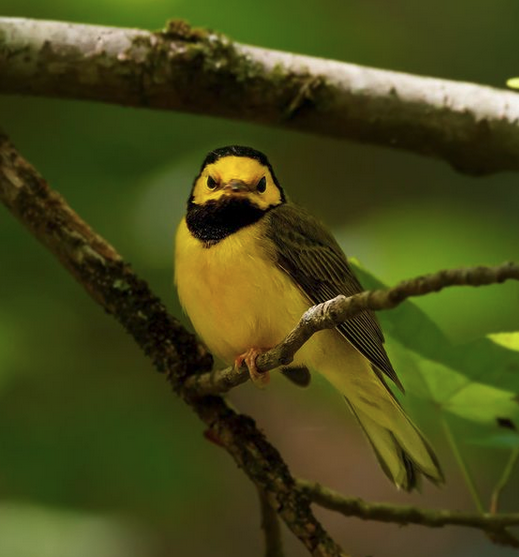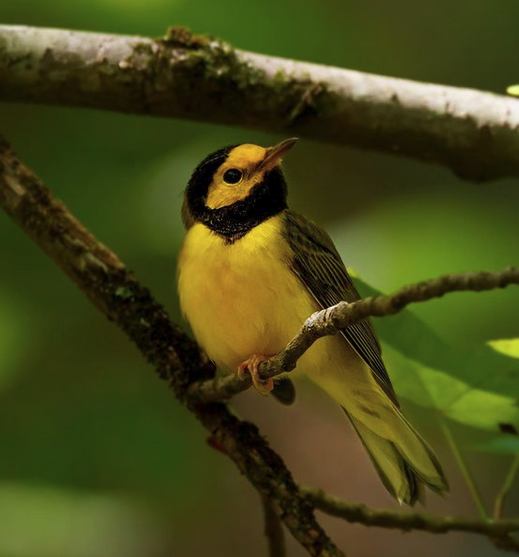By Sally Siko
Here’s a bird that I see each year but struggle to photograph, the Hooded Warbler.
It’s not that they are uncommon or are particularly shy that makes them tough to photograph, rather it’s their proclivity to hanging out in the dark shadowy areas of the woods. That bright yellow color in their plumage acquires a dull green tinge from the dim light filtering through the leaves.
That frustrates me because I’d love to get a good photo of one out in the open so that I can capture its true colors properly.
I spotted this one last week while birding along the Cape Fear River in central NC. As usual the ‘Hoodie was tucked up in some dark brush so once again there was now way to get the shot I wanted.
Still, just seeing one of these gorgeous birds is pretty damn cool so I’ll still count this encounter as a win in my book.
Despite their brightly colored appearance, these guys can be tough to get eyes on. Luckily male hooded warblers are known for their complex and melodious songs. They use their songs to attract mates during the breeding season and may be found easily in the woods by listening for them.
A breeding bird found in all of NC’s 100 counties, soon pairs of Hoodie’s will team up and start family’s. They build their nests close to the ground, often in shrubs or dense vegetation. Interestingly, they incorporate spider silk into their nests, which adds strength and elasticity which is pretty neat!
These guys will stick around NC through late September. Look for them in the brushy understory’s of the forest between 10-20ft off of the ground in stands of deciduous trees near water.
Btw, I’ve got a ton of fun group birding trips in North Carolina, South Carolina, Maine and New Jersey open for booking from now through December.
Check out the calendar below and book your next birding adventure with me today!
Photos by @sally_siko of @bestlife_birding on my mighty mirrorless monster, the @canonusa #R5






